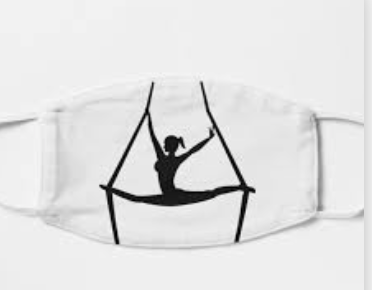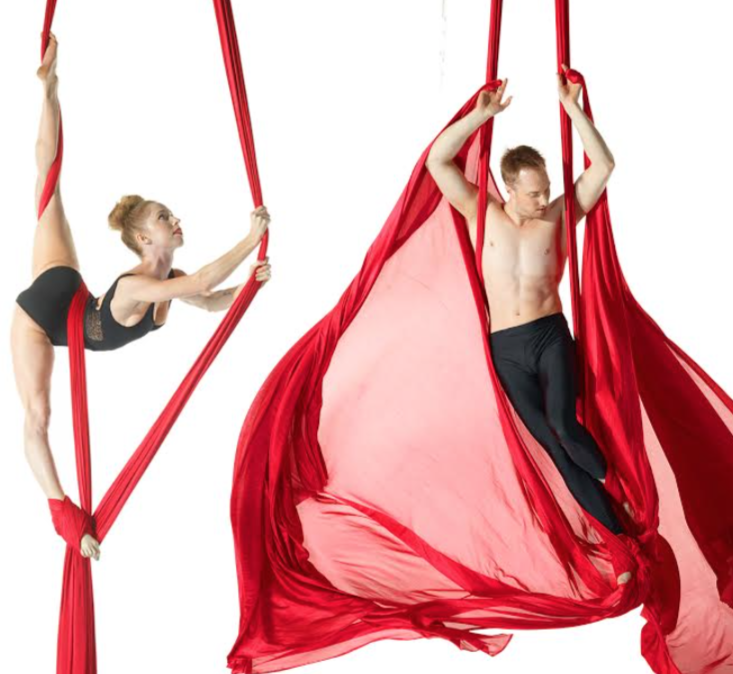
Most of us know by now that the Centers for Disease Control and Prevention recommends we cover our faces when we are in crowded public spaces, such as parks or trails, and in shared, indoor locations, including gyms, to help block the transmission of the coronavirus through respiration.
These recommendations — which are requirements in some communities and businesses — become particularly important when we exercise, since studies show that our breathing rates can double or even quadruple then, sending out higher numbers of potentially infectious respiratory droplets.
As aerialists, trying to get back to our pre-pandemic fitness level while wearing a mask is certainly a challenge. You may prefer training alone or with members of your household in order to avoid this added incumbency.
We are none of us islands though and there will likely come a time when you just really want to train with friends and classmates, to share skills and be challenged and inspired in ways that just aren’t possible (or at least, sustainable) with solo practice.
Here at Womack and Bowman we primarily train at our studio alone in Covid times (with a crash pad and studio manager/instructor next door) but come together about once a week to work on our duo projects. Although we have recently made the choice to open our ‘quarantine bubble’ to include each other, there was a period of about four months where we met and trained together while maintaining social distance and wearing masks.
During this time we experimented with a number of different masks including N95’s, surgical masks and numerous cloth masks.
Here are some tips we have gathered from both personal experience and from medical experts on how to train aerial safely in a face mask:
1. Use a Lightweight Mask
Dr. Tista Ghosh, Epidemiologist and Medical Director cautions against using N95 or surgical masks to work out in. She notes that these masks could make your workout much more difficult (which is what we found) and should be saved for medical use. “Instead, look for lightweight, cloth masks that fit snugly but comfortably against the side of your face. Leaks or gaps can reduce a mask’s effectiveness,” Dr. Ghosh sais. “Cloth masks can be laundered and machine dried without damage or change to the shape, which is important. You should never exercise in a dirty mask.”
Many small businesses and sports brands are now selling face masks that are specifically designed for working out — they’re more breathable but still provide protection. We recommend investing in one of these. Before you hit the aerial studio or invite friends over to your rig, try jogging on the spot for a few minutes in your mask to make sure it is comfortable enough to keep on for longer periods of time.
2. Start Slow
Reuben Elovitz, MD, stresses the importance of starting your mask-wearing work-out at a slow pace. Your body isn’t accustomed to training aerial with a facial covering, which can restrict how much oxygen you’re getting, and it may take time for you to get comfortable exercising this way. “Some people are going to have some degree of feeling that you were overexerting yourself,” Dr. Elovitz says. “Once you feel like you’re pushing yourself too hard, then you need to take a few minutes and then reset at a lower intensity.” Dr. Ghosh also says that you should “pay attention to any dizziness, lightheadedness, or shortness of breath.” If you experience any of these symptoms, take a break from your aerial workout until you’ve fully recovered. If they’re a frequent occurrence, it might be best to stick to lower intensity training like Yoga, Pilates or flexibility while working out in a group and save your aerial training for solo sessions when you can go mask-less.
3. Take Frequent Breaks
Now is not the time to focus on nailing high-level new skills and tricks or set personal records for Roll-ups or Hip Circles. Check in with yourself and listen to what your body needs.
If you’re frustrated by the limitations of training with a mask, remind yourself of the bigger picture. You’re helping yourself and others by doing your part to prevent the spread of the coronavirus. Plus, there’s a silver lining to your mask-wearing aerial training sessions. It’s like training at altitude. Just think how easy it will be to climb and spin when you can return to mask-free training!







